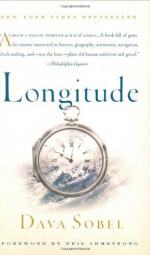|
This section contains 175 words (approx. 1 page at 400 words per page) |

|
Chapter 4: Time in a Bottle Summary and Analysis
The difficulty of designing a clock to measure longitude extended back to the 16th century. But clocks in that time were not accurate enough and could not weather temperature changes. In the 17th century, Galileo designed a pendulum clock, and its mechanisms were later used in many different clocks. Galileo's heir, Christiaan Huygens, was one of the first great "horologists" or clock makers. He built a pendulum clock and published an argument that the clock could establish longitude at sea. Huygens eventually meets a competitor scientist, Robert Hooke, and they both fight over the British patent for the coiled balance spring, which prevents waves from destabilizing a clock's timekeeping. Chapter 4 outlines the origins of the clock strategy for tracking longitude. Its history is not independent of elite interest, with great early scientists such...
(read more from the Chapter 4: Time in a Bottle Summary)
|
This section contains 175 words (approx. 1 page at 400 words per page) |

|




